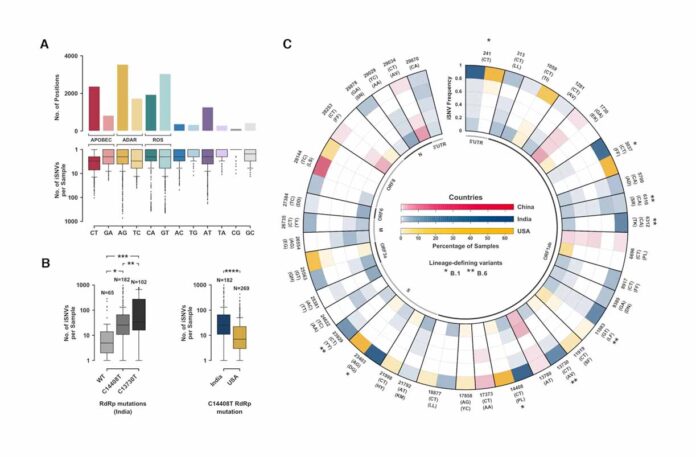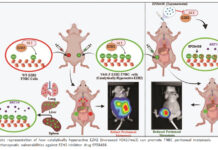New Delhi, Feb. 10: A team of scientists from top Indian research institutes has identified variations in COVID-19 RNA and their implications by using state-of-the-art genomic sequencing methods. The researchers have also studied the fixation of these intra-host variations into extra-host variations and mutations that lead to variants.
The RNA structure of the COVID-19 virus frequently undergoes minor modifications within the host cells (‘intra-host variations’). These modifications occur at the nucleotide level – nucleotide being the building block of the RNA molecule. Many of these intra-host variations are caused by enzymes present in the host cell as an immune response. Thus, many of these variations are harmless or even destructive to the virus itself. However, some variations can enhance the survivability of the virus, and become fixed as extra-host variations that could potentially lead to variants of concern.
Researchers studied intra-host Single Nucleotide Variations (iSNV) using a sequencing platform called Illumina. During Phase-I of the project in 2020, scientists analysed the RNA structure of virus samples collected from China, Germany, Malaysia, the United Kingdom, America, and different subpopulations of India to map the iSNV across the RNA structure of the virus.
Tracking and understanding the fate of iSNV can help predict the variants of concern and plan actionable interventions. This understanding helps know the differences in individual and population responses to the infection and devise therapeutic protocols to treat COVID infections.
DrMitaliMukerji, Professor and Head, Department of Bioscience & Bioengineering, IIT Jodhpur, who co-led the study, says, “One of the most important aspects to managing the COVID-19 pandemic is to unravel the genetic structure of the virus and pick up early warning signatures.We observed 16,410 iSNV sites spanning the viral genome, and a high density of alterations was present in critical areas that could alter or override the body’s ability to trigger an immune response.”
This research was initiated at the Council of Scientific and Industrial Research Institute of Genomics and Integrative Biology (CSIR -IGIB, (Delhi), and was led by IIT Jodhpur and Institute of Life Sciences (ILS), Bhubaneswar. Other collaborating institutes are the Academy of Scientific and Innovative Research (Ghaziabad), Council of Scientific and Industrial Research-Center for Cellular and Molecular Biology (CSIR-CCMB), Hyderabad, and National Center for Disease Control (NCDC), New Delhi.
Researchers observed similar patterns across populations and waves of the pandemic. It also tracked the iSNVs over time to see if the variants produced inside the host cells can persist outside, thereby becoming fixed as SNVs. They found that by 30 June 2021 about 80% of the iSNV sites they had identified in 2020 became fixed as SNVs. The conversion of iSNVs to SNVs was substantiated in Phase 2 studies that showed iSNVs were found in most of the Delta and Kappa variants before their fixation as SNVs by February 2021.
“The evolution of SNVs from iSNVs can affect vaccine response by altering the antibody generation in infected individuals,” says Dr. Mukerji, on the implications of their findings. The identification of iSNVs can also help identify critical sites in the viral RNA that are important for its survival and spread.
The study was conducted primarily by a team of computational graduates who aspire to work in the space of Big Data in computational “omics” sciences. Among those in the group are noteworthy, Mr. Ankit Pathak, a B.Tech in computational sciences and Mr. Gyan Prakash Mishra who is a Master in pharmaco-informatics.
The multi-institutional team, led by Dr. MitaliMukerji, Professor and Head, Department of Bioscience & Bioengineering, IIT Jodhpur and Dr. Sunil Raghav, Scientist F, Institute of Life Sciences, Bhubaneswar, plans to combine iSNV identification protocols with whole-genome sequencing in the future to enable more accurate models for viral epidemiology.
The results of the two-phase study have been published in the journal Nucleic Acid Research. (India Science Wire)
























